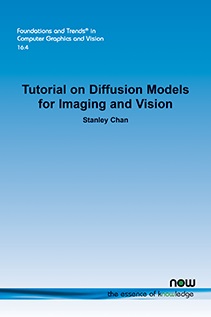Tutorial on Diffusion Models for Imaging and Vision
By Stanley Chan, School of Electrical and Computer Engineering, Purdue University, USA, stanchan@purdue.edu
Abstract
The astonishing growth of generative tools in recent years has empowered many exciting applications in text-to-image generation and text-to-video generation. The underlying principle behind these generative tools is the concept of diffusion, a particular sampling mechanism that has overcome some longstanding shortcomings in previous approaches. The goal of this tutorial is to discuss the essential ideas underlying these diffusion models. The target audience of this tutorial includes undergraduate and graduate students who are interested in doing research on diffusion models or applying these tools to solve other problems.
Tutorial on Diffusion Models for Imaging and Vision
The astonishing growth of generative tools in recent years has empowered many exciting applications in text-to-image generation and text-to-video generation. The underlying principle behind these generative tools is the concept of diffusion, a particular sampling mechanism that has overcome some shortcomings that were deemed difficult in the previous approaches. The goal of this monograph is to discuss the essential ideas underlying the diffusion models. The target audience includes undergraduate and graduate students who are interested in doing research on diffusion models or applying these models to solve other problems.
